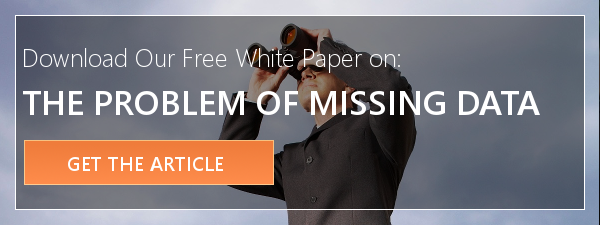Fair lending concerns are one of the dominant risks lenders face in regard to their business operations.
Although larger lenders typically have significant resources in place to mitigate these risks, and there has been an emphasis in the last decade on quantitative methods for fair lending evaluation, there remains a great deal of subjectivity in how to accurately assess fair lending compliance.
In other words, (1) which process(es) should be used and (2) how do you know when you have found discrimination and when you haven’t?
Although many lenders, large and small, struggle with how to approach fair lending monitoring in a way that is acceptable to the regulatory bodies, there is actually a wide range of methods that could be employed. These range from a manual review of loan files to more complex approaches involving the use of statistics and econometric methods. Within each of these, there are approaches within approaches, so to speak, which add to the obscurity as there are so many variations and options.
Simplicity is often our friend in trying to detangle complex issues when there is much gray area. As fair lending is a regulatory issue, a good place to start is with what guidance is available from the regulatory agencies.
In a seminal document, the Federal Deposit Insurance Corporation (FDIC) provides guidance for institutions wishing to compare its treatment of loan applicants through self-assessment in the Side by Side A Guide to Fair Lending (1996). The guidance for a comparative analysis of loan files recommends identifying target groups, or those most at risk of illegal discrimination (e.g. females or racial/ethnic minorities). It also recommends selecting control groups, or those that are least likely to have experienced discrimination on a prohibited basis (e.g. white males or white couples).[1]
The FDIC recommends comparing target and control group borrowers with “similar flaws in applicant characteristics that may have resulted in the denial of a target group applicant but not a control group applicant.”[2] The purpose of this comparison is to determine if “similarly qualified prohibited basis and control group applicants had different credit outcomes.”[3]
The precision of the comparative file review depends on how precisely the control group approximates the credit outcome that a target group borrower would have experienced if the borrower was not a member of the target group (i.e. the counterfactual). Ideally, a comparative analysis compares target group borrowers to control group borrowers who are similar in every way except for belonging to the target group. If the control group is, in fact, similar in every way to the target group, then the comparative file review can draw accurate conclusions regarding discriminatory treatment of members of the target group. The more detailed and similar the comparisons between those among the control group and target group become, the more accurately an institution can be judged for fair lending practices.[4]
However, a comparative file review might result in inaccurate conclusions if the control group is not an accurate representation of the counterfactual. This means proper sample selection being the key. Selecting the appropriate control group is of utmost importance to the precision of the analysis. Target and control groups should be matched based on observable borrower characteristics (credit score, debt-to-income ratios, etc.) and observable loan product characteristics (loan-to-value ratios, loan term, etc.) that affect credit outcomes. Careful attention must also be paid to factors that may influence the outcomes but are not observable in the data. One way to mitigate this is through homogeneous sample selection.
According to the appendix to the Interagency Fair Lending Examination Procedures, “one type of comparative file review is statistical modeling to determine whether similar control group and prohibited basis applicants were treated similarly.” Regression analysis is a tool for statistical modeling.
Regression analysis estimates the effect of belonging to a target group on credit outcomes while controlling for non-prohibited basis characteristics that affect credit outcomes.
In other words, regression analysis allows for a comparison of “similarly qualified prohibited basis and control group applicants” with “similar flaws” as described in the guidance provided by the agencies involved in fair lending enforcement.
Like all comparative file reviews, the precision of the estimate depends on the ability to compare similarly qualified target group and control group borrowers. Unlike manual comparative file reviews, similar target and control group borrowers are not selected for comparison for regression analysis. Instead, the variables that affect credit outcomes enter into the regression model as controls, allowing for a test of discriminatory treatment on a prohibited basis while holding constant factors that affect credit outcomes. These controls serve the same purpose as matching target group and control group borrowers in manual file reviews and are intended to provide a comparison of treatment between similarly qualified borrowers.
Often, the entire population of loans is divided into segments based on loan products, loan types, and/or loan purposes, grouping together loans with similar underwriting or pricing criteria. While it may be possible to test for evidence of discrimination in a single regression model with many controls, it is often simpler and more accurate to divide the population into segments.
Dividing the population is simpler and more accurate for many reasons. Regression models for smaller loan segments require controls for only those variables that affect credit outcomes for that individual segment, resulting in fewer controls and easier interpretation of results. Additionally, in the event that a regression result shows a disparity, separate results for each loan segment allows the institution to more easily identify and make the necessary adjustments to specific products with evidence of discriminatory treatment on a prohibitive basis. Further, segmentation of the loan pool is a conservative approach to ensuring that comparisons between target group and control group borrowers are appropriate in the case that data does not capture all of the relevant differences between borrowers that affect credit outcomes.
Consider, for example, the practice of segmenting comparative file reviews by loan purpose. Cash-out refinance mortgages often have different underwriting standards than purchase mortgages.[5] While a complex regression model might be able to control for such differences, the simplest and most accurate approach is to run separate regressions for cash-out refinance mortgages and purchase mortgages.
The regression for cash-out refinance mortgages will only include the controls relevant to cash-out refinance mortgages. The regression for purchase mortgages will only include the controls relevant to purchase mortgages. The estimates will be easy to interpret and more conservatively estimated than grouping these segments together.
There is a less obvious but important advantage to segmenting comparative file reviews by loan purpose – it helps control for differences that affect credit outcomes that are not captured in the data. Home refinance borrowers are systematically different than home purchase borrowers in ways that might not be captured in the data. The transactions are also generated by a completely different process.
Suppose white males are more attentive to fluctuations in market rates on average and, therefore, more likely to refinance their mortgage during periods of low interest rates. If home purchase and refinance loans are grouped together in a regression, then there will be a disproportionate number of white males (control group borrowers) receiving low rates relative to target group borrowers because of the timing of their loan.
The difference in rates results not from discrimination on the basis of a prohibitive class but instead from the market rates at the times the rates are locked for the loans. Including a control in the regression model for the date that the rate is locked could control for these differences; but in rate environments where rates change even within a single day, controlling for these differences becomes complex or even impossible depending on the availability of data.
Segmenting the loans by loan purpose is a simpler way to help ensure that target group and control group borrowers are similar in every way. A separate regression result for only those borrowers refinancing their home controls for the systematic differences in price sensitivity that may bias estimates when all loans are pooled together. Members of the target groups and control groups are more likely to be similar in their motivations, price sensitivities, and in other ways that affect credit outcomes but are not easily captured in the data.
The Interagency Fair Lending Examination Procedures also recommends a similar approach. On page 7, in referring to a comparative review of mortgage loans, the procedures state:
Divide home mortgage loans into the following groupings: home purchase, home improvement, and refinancings. Subdivide those three groups further if an institution does a significant number of any of the following types or forms of residential lending, and consider them separately:
- Government-insured loans
- Mobile home or manufactured housing loans
- Wholesale, indirect and brokered loans
- Portfolio lending (including portfolios of Fannie Mae/Freddie Mac rejections)
The procedures further state that special programs like affordable housing products, have special terms and conditions that make them “incompatible with regular conventional loans for comparative purposes” and should be considered separately.
The intent seems obvious – a fair lending review should always compare “apples-to-apples.”
In any comparative review, whether it is manual examination of files or a statistical review, the conclusion drawn will always be based on a sample of data. The goal of a comparative file review should be to isolate the effects of protected class status. To accomplish this, all variation should be eliminated or controlled for except for prohibited bases. Whether this is accomplished or not is heavily reliant on the sample selection.
Only then can differences in treatment be truly evaluated – which should always be the intended purpose of a fair lending review.
[1] Pg. 18
[2] Pg. 21
[3] See page 20 of the Interagency Fair Lending Examination Procedures provided by the Office of the Comptroller of the Currency, the Federal Deposit Insurance Corporation, Federal Reserve Board, Office of Thrift Supervision, and the National Credit Union Administration.
[4] FDIC Side by Side Fair Lending p. 17
[5] See the Fannie Mae eligibility requirements at https://singlefamily.fanniemae.com/media/20786/display
How to cite this blog post (APA Style):
Premier Insights. (2020, October 1). Cutting Through the Murkiness: Fundamentals of the Comparative Review for Fair Lending [Blog post]. Retrieved from https://www.premierinsights.com/blog/cutting-through-the-murkiness-fundamentals-of-the-comparative-review-for-fair-lending.



